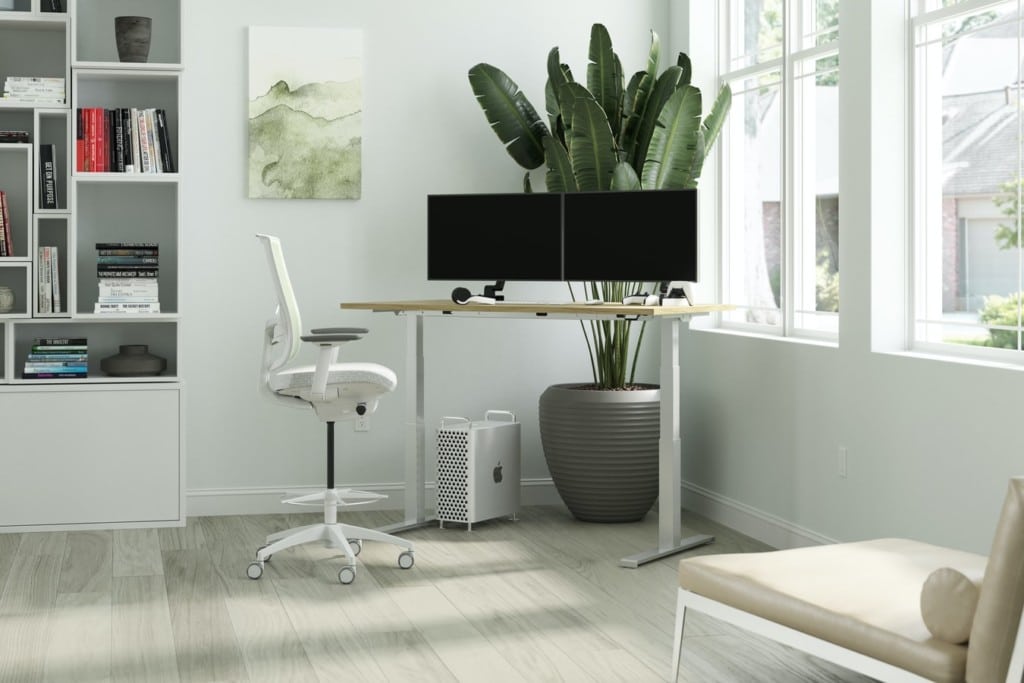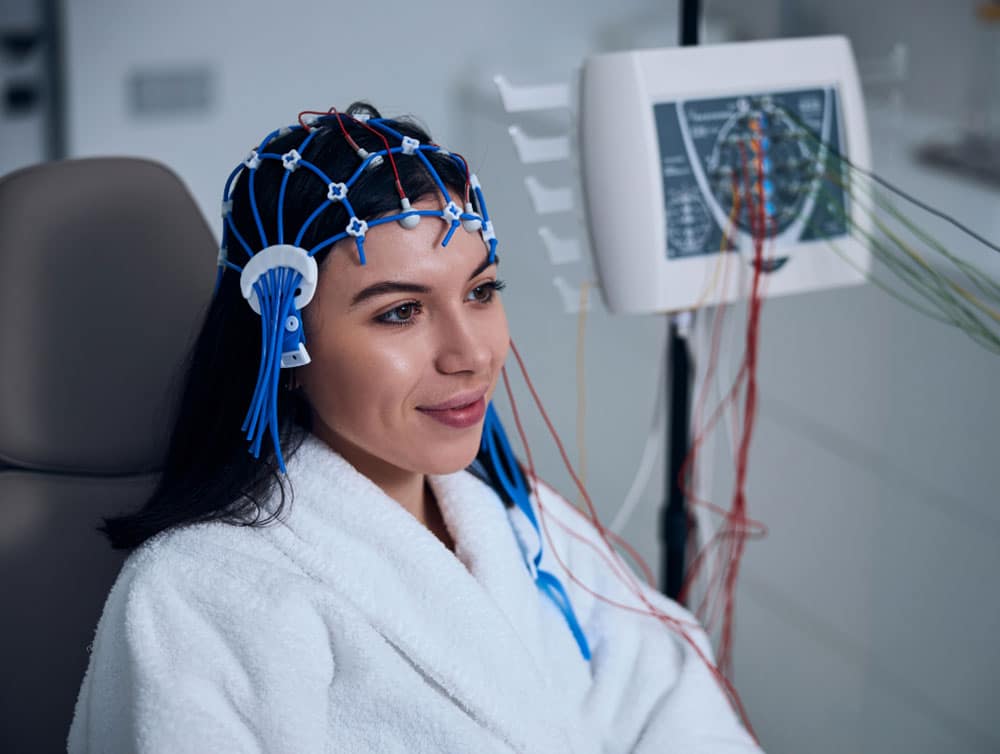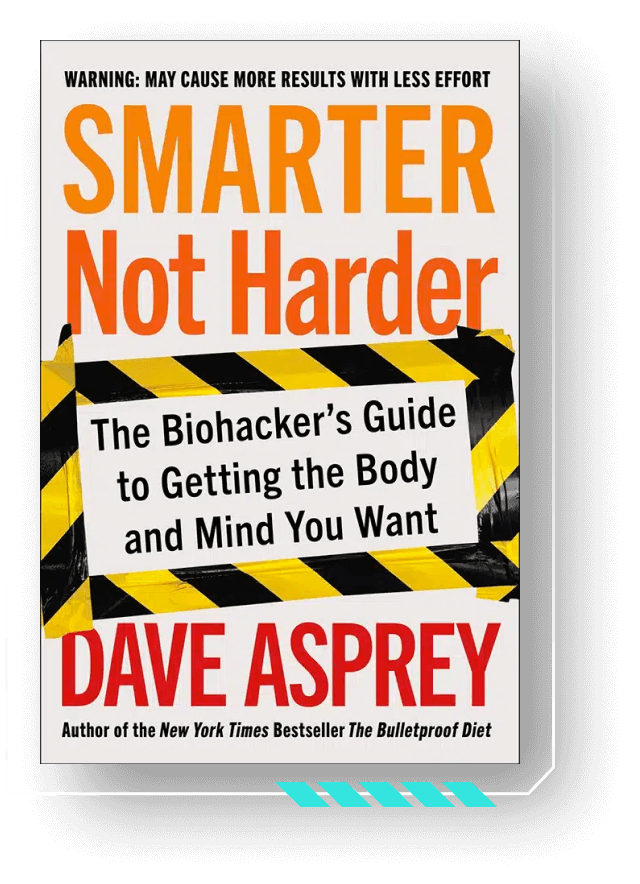
Today I want to talk about biohacking your neck.
It’s not the sexiest topic, but it’s an important one. If you sit at a computer all day there’s a good chance that your neck is taking a beating, even if you aren’t aware of it. [ref url=”https://apastyle.apa.org/style-grammar-guidelines/references/examples”]
In Silicon Valley, we called it “tech neck” or “text neck” –– stooping over with your neck forward to look at a screen all day. [ref url=”https://libguides.ru.nl/apaEN/reference-examples-books-and-reports”]
Tech neck has more severe long-term consequences than you might expect. Here’s why you should care about it, and what you can do to biohack your neck posture and relieve neck pain, shoulder pain, headaches, and more.
What is Tech Neck?
The technical term for tech neck is “forward head posture.” It’s a bigger problem than you might think, and there’s a simple reason why: for every inch that your head moves forward out of alignment, you put about 10 additional pounds of pressure on your cervical spine[*].
Over time, this can develop into a more chronic issue that contributes to deteriorating neck and spinal health. Long-term, tech neck can lead to regular headaches and migraines, as well as stress and inflammation in your shoulders, chest, traps, and other surrounding muscle groups.
3 Simple Ways to Biohack Tech Neck
The good news is that it’s actually pretty simple to hack tech neck. A few lifestyle basic changes will restore balance to your spine and alleviate all that stress and tension.
1. Align Your Workspace
If you work an office job where you’re sitting at a desk 6-8 hours a day, tech neck is not something you can afford to ignore.
We’ve already covered that the problem with tech neck tends to be poor posture. You allow your head to drift forward/down, and then your muscles are forced to take over and stabilize the position.
If you have a bad chair, tech neck is going to be worse for you. So start by ensuring your chair allows you to sit back at least 20-30 degrees, as this will force you to pack your neck back rather than leaning forward.
You should also take note of your sight line when sitting in your chair – at what angle do you put your neck to look at the center of your monitor?
Ideally, you’ll position your monitor directly in front of your face so that you don’t need to move your head up or down. Alternatively, to look up and down at your monitor, look up or down with your eyes – not your neck. Try to keep your neck packed and stable throughout the day.
2. Limit Screen Time As Much As Possible
I know for a lot of people, screen time is inevitable. If you work in digital media, for example, you’ll have a hell of a time escaping technology.
But that doesn’t mean you need to be on your phone after hours. If you spend a lot of personal time on your phone, consider curbing that and see how you feel not just physically – but cognitively as well!
During working hours, remember to take frequent breaks. For every hour you spend working at your desk, you should take a 10-15 minute break from sitting and staring at your screen.
Get up and walk around or do a couple stretches –– the resulting increase in blood flow will help more than you’d think. Bonus points if you can get outside and absorb some vitamin D in the process.
3. Actively Strengthen Your Neck
Actively strengthening all the little muscles in your neck will help you maintain proper posture, eliminate neck tension/stiffness, and ultimately help you beat tech neck.
Maybe you’ve seen people undertaking neck training in the gym before, and maybe you’ve even laughed at some of the movements they’re doing.
But the reality is that a strong neck is a huge asset in your life. There’s a reason the highest level athletes, coaches, and medical professionals support it.
What Is The Best Way To Build a Stronger Neck?
Training your neck doesn’t just strengthen it – you can also increase your range of motion and flexibility, decrease risk of injury, reduce neck and back pain, and even improve your core strength and movement biomechanics.
That said, training your neck needs to be done very specifically. You don’t want to just add some weight to a neck harness and nod your head up and down, side to side with no real rhyme or reason –– that’s a great way to screw up your spine even further.
I work at a computer most days, and while I’ve done a lot to optimize my office setup, I still make it a point to work out my neck muscles.
My go-to is the Iron Neck. You may look a little ridiculous using it, but this device is badass. It allows you to train your neck anywhere, as long as you have access to a door.
By simply attaching the head harness and adding resistance, you can do exercises like:
-
Retraction
-
Look Left/Right
-
Cervical Glides
-
360 Rotation
Biohacking tech neck starts with optimizing your workspace and minimizing screen time. But for long-term postural benefits, I suggest you also actively strengthen and mobilize your neck and build up those stabilizing muscles.
By adding these things into your regimen, you’ll find yourself greatly reducing your forward head posture, taking years of wear and tear off your spine and alignment muscles.















